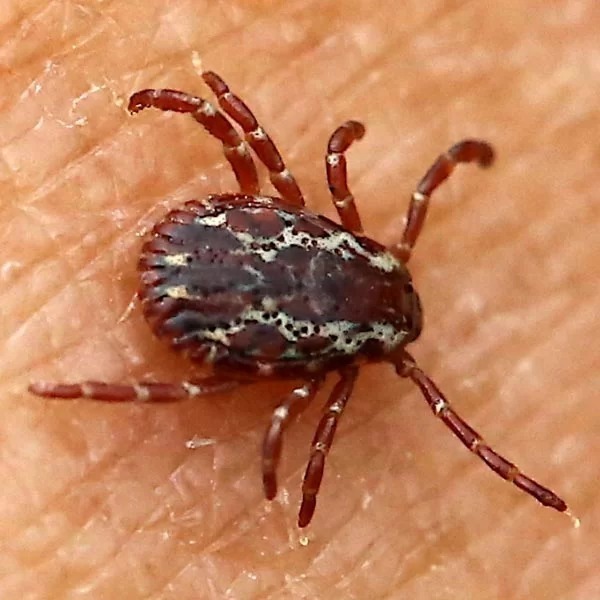
Finding a tick inside your home can be alarming. These small, parasitic insects are notorious for carrying diseases, including Lyme disease and Rocky Mountain spotted fever. Whether it’s on a pet, your clothing, or just crawling around your floors, the sight of a tick can make anyone anxious.
But don’t panic! In this article, we will walk you through the essential steps to take when you discover a tick in your home, ensuring that you handle the situation safely and effectively. Read on to learn how to deal with ticks, prevent future infestations, and keep your home tick-free.
What Is a Tick? Understanding the Risk
1. What Are Ticks?
Ticks are small arachnids (related to spiders) that feed on the blood of mammals, birds, and sometimes reptiles. They latch onto their hosts using specialized mouthparts, and during feeding, they can transmit various diseases.
2. Common Types of Ticks
In the U.S., the most common ticks include the deer tick (which can spread Lyme disease) and the dog tick (known for carrying Rocky Mountain spotted fever). It’s essential to identify the tick correctly to understand the potential risks.
Step-by-Step Guide: What to Do When You Find a Tick in Your Home
1. Remain Calm and Assess the Situation
First, take a deep breath and keep your cool. While ticks are a concern, they’re manageable if handled properly. Check where you found the tick. Is it on your pet? On your clothing? Or simply crawling on the floor? This will determine the best course of action.
2. Safely Remove the Tick from Your Pet
If the tick is attached to your pet, it’s important to remove it as soon as possible. Use a pair of fine-tipped tweezers to grasp the tick as close to your pet’s skin as possible. Pull it out gently and steadily, avoiding twisting the tick. After removal, clean the bite area with rubbing alcohol or soap and water.
3. Remove the Tick from Your Clothing or Skin
If the tick is on your skin or clothing, follow the same removal procedure. Again, use tweezers to grasp the tick at the base and pull it out in a steady motion. Don’t crush the tick, as this can release harmful bacteria into the wound.
4. Dispose of the Tick Safely
After removing the tick, place it in a small container with rubbing alcohol to kill it. You can also flush it down the toilet. Avoid crushing the tick with your fingers, as it may carry pathogens that could pose a risk.
5. Clean the Area Thoroughly
Once the tick is removed, clean the area thoroughly. If the tick was found on the floor, vacuum the area and dispose of the vacuum bag or empty the canister. If you find multiple ticks, it might be a sign of an infestation, and additional steps will be needed.
Preventing Future Tick Infestations in Your Home
1. Examine Your Pets Regularly
Ticks often latch onto pets when they roam outside. Make it a habit to check your pets daily, especially if they’ve been in wooded or grassy areas. Use tick-prevention treatments prescribed by your veterinarian to reduce the chances of ticks attaching to your pets.
2. Clean and Seal Entry Points
Ticks can enter your home through open doors and windows or on pets that come inside. Make sure to seal cracks and gaps in windows, doors, and walls to prevent ticks from entering your home. Also, consider using screens to keep insects outside.
3. Create a Tick-Free Yard
Ticks thrive in areas with dense vegetation and moisture. Keep your lawn well-maintained by mowing regularly and removing excess brush and leaf litter. If you live near wooded areas, consider creating a barrier of gravel or mulch between your yard and the woods to prevent ticks from migrating into your space.
Additional Tips: Keeping Your Family Safe from Ticks
1. Use Tick Repellents
When spending time outdoors, use tick repellents that contain DEET or permethrin. These can be applied to your skin, clothes, and pets to help ward off ticks. Always follow the manufacturer’s instructions for safety.
2. Wear Protective Clothing
If you’re heading into tick-prone areas, wear light-colored clothing that makes ticks easier to spot. Tuck pants into socks or boots, and wear long-sleeve shirts to minimize exposed skin. Afterward, check your clothing and body for ticks.
3. Shower After Outdoor Activities
If you’ve been outside in areas with tall grass or woods, take a shower as soon as possible. This will help remove ticks before they attach to your skin.
What to Do if You Develop Symptoms After a Tick Bite
1. Monitor for Symptoms of Tick-Borne Diseases
After being bitten by a tick, it’s crucial to monitor yourself for signs of infection. Symptoms of tick-borne illnesses may include fever, headache, fatigue, and joint pain. If you develop any of these symptoms within a few weeks of a tick bite, consult a healthcare professional.
2. Seek Medical Attention if Necessary
If you suspect that you’ve contracted a tick-borne disease, seek medical attention promptly. Early treatment can prevent complications and speed up recovery. Always inform your doctor about the tick bite and when it occurred.
Frequently Asked Questions (FAQs) About Ticks
Q: How long does a tick need to stay attached to transmit disease?
Ticks need to be attached for at least 24-48 hours to transmit diseases like Lyme disease. Removing ticks promptly reduces the risk of transmission.
Q: Can ticks survive inside my home?
Ticks can survive indoors for a short time if conditions are favorable, but they typically prefer to live outside. Regular cleaning and inspection of your home can help prevent an infestation.
Q: Are all ticks dangerous?
Not all ticks carry diseases, but it’s important to treat all tick bites seriously and monitor for symptoms. Certain species are more likely to transmit illnesses.
Conclusion: Staying Vigilant and Safe
Finding a tick in your home can be unsettling, but by following these simple steps, you can handle the situation calmly and efficiently. Regularly check your pets, maintain a tick-free yard, and stay vigilant when spending time outdoors. With the right precautions and knowledge, you can protect your family from tick-borne diseases and create a safer, healthier environment at home. Stay proactive and take action to ensure that ticks don’t have a chance to take over your space!





